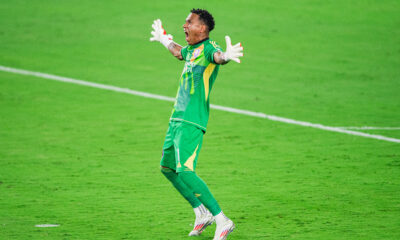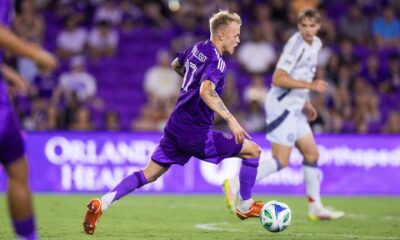Orlando City
Orlando City vs. Montreal Impact: Final Score 3-3 as Lions Salvage Point via Late Equalizer
The Lions left it late on Saturday night against Montreal, but a moment of Jonathan Spector brilliance in stoppage time secured a home point for City.
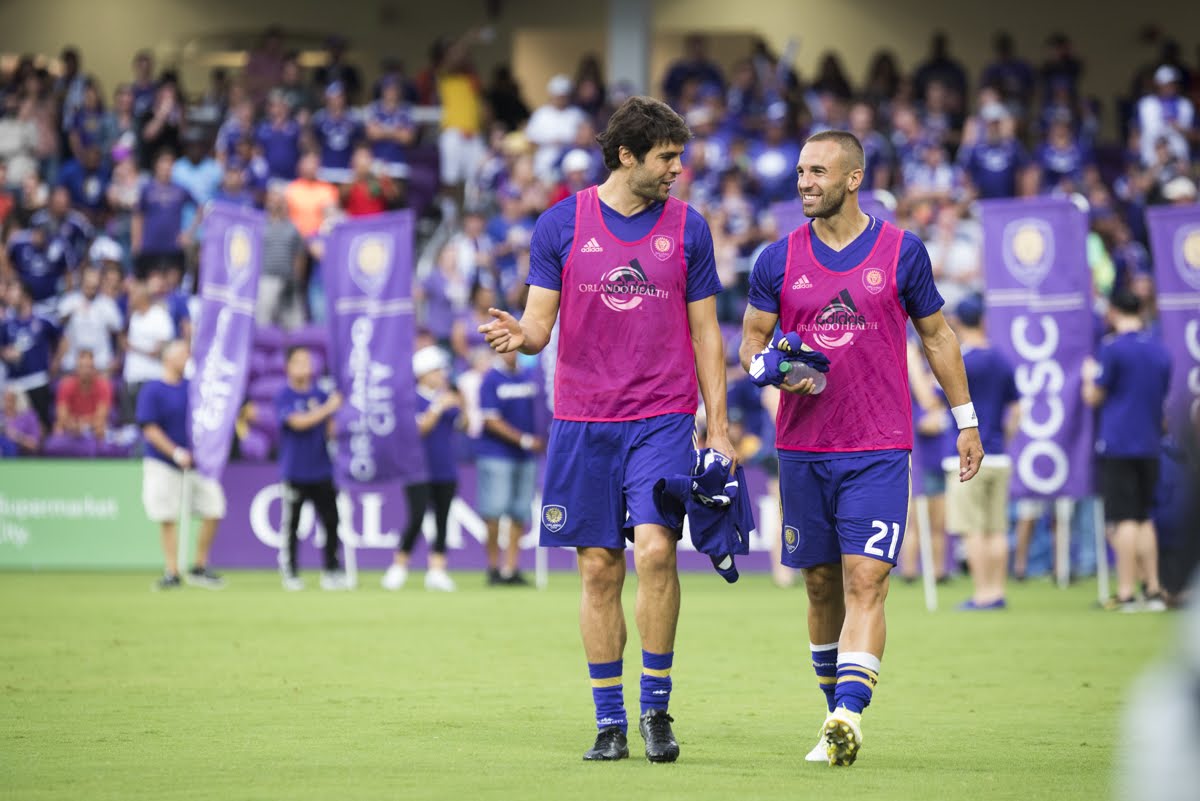
Saturday night’s contest against the Montreal Impact was an especially important one for Orlando City. The Lions (7-5-4, 25 points) were coming off a listless showing in their mid-week U.S. Open Cup match, and that effort, combined with Cyle Larin’s DUI arrest the morning after, left a cloud hanging over the club for the past several days.
It wasn’t the full three-point outing that the club and its fans were hoping for, but it was entertaining and the Lions showed a lot more what-for — albeit against a ninth-place side — in a dramatic 3-3 draw vs. Montreal Impact (4-4-6, 18 points) capped by a Jonathan Spector goal in second-half stoppage time.
There were legitimate concerns about Orlando’s ability to score without its main man up top (Larin had scored 50% of the club’s goals this season entering the game), but those concerns were at least temporarily eased by a fast offensive start against the Impact.
Despite playing without its leading scorer, Orlando City didn’t waste much time getting things going on the offensive end. Kaká — making his first start since a May 21 calf injury vs. NYCFC — sent in a cross from the left wing that Will Johnson took a stab at with a volley, but the Canadian was unable to keep his effort down enough and sent it sailing over the bar. It didn’t take long for Orlando to open the scoring, however, as five minutes later Kaká managed more impressive work down the left side, getting past Hassoun Camara with ease and pulling back a cross that Matías Pérez García was able to adjust to — he found it about a half-yard behind him as his momentum took him toward goal — and finish left-footed for his first goal in an Orlando City shirt.
While well-worked, the goal was not without a bit of controversy, as the ball was very close to being over the end line when Kaká chased it down and sent it back to MPG. It was tough to tell live and from certain camera angles on replay, but it’s safe to say our Canadian counterparts at Mount Royal Soccer weren’t as pleased with the end result as we were.
Nevertheless, City found itself up a goal just seven minutes in.
Perhaps a bit of karmic retribution was repaid in minute 16 by Jose Aja, who, instead of clearing the danger while being closed down by Ignacio Piatti, decided to dance around and was subsequently stripped by the Argentinian, who took full advantage of the defender’s gaffe and found an open Blerim Dzemaili in the box, who confidently slotted home near-post to knot the game at 1-1.
Continuing the trend of an exciting first half, though, Orlando answered less than 10 minutes later.
Giles Barnes played MPG into the box nicely, and the Argentinian laid it back to Johnson, whose first-time shot was parried back by Evan Bush and into the legs of his own center back Laurent Ciman just off the goal line, but the deflection off the Belgian fell perfectly for Rivas to smash home a go-ahead goal and make it 2-1 in minute 23 for Orlando. While Ciman’s knees kept Johnson from getting credit for the score, the Colombian Rivas left no doubt with his rifle of a finish on the rebound.
All of a sudden, an Orlando team that had averaged fewer than 1.1 goals per match coming in had netted two in the opening 25 minutes, and without Larin.
After another series of chances that included a beautiful one-two combination play from the likes of Rivas and Barnes, as well as a backheel nutmeg of Camara by Kaká, Orlando City finished the first half with a 14-2 shot advantage and 60% of the possession, but the one-goal advantage felt like it could’ve, and perhaps should’ve, been greater.
The failure to capitalize on chances in the first half predictably came back to bite Orlando City, as Montreal’s dynamic midfielder Piatti sprung for two goals in a two-minute span, with Lions center back Spector being bested both times.
Piatti used a clever touch on the first goal to set himself up on his right leg, side-stepping Spector in the process before finishing with a low burner that made it through Joe Bendik’s legs. Piatti struck again almost instantly in minute 59 when he cut to the inside of Spector to the left this time and fired another shot at Bendik. This time the Lions’ keeper was able to make the save, but Piatti was the only man left standing among a pile of three Orlando City players who had gone to ground to try to defend the first shot, and he easily tapped home his eighth goal of the season to put the Impact ahead 3-2, just like that.
The flow of the game had suddenly been flipped, and the energetic attacking we saw from the Lions in the first half was dampened quite a bit. Lacking Larin up top, the Lions didn’t have too many options to go to for an offensive boost off the bench, but the attacking crew of Kaká, Rivas, Barnes, and Pérez García continued to fight to create chances to equalize.
After several more missed opportunities to produce chances — Barnes launched an awkward left-footed shot well wide despite having an open Johnson rushing down the middle, and played a through ball just too far for a charging Kaká minutes later, to name a couple — it seemed like hope was lost for Orlando.
One thing we’ve learned about these Lions, though, is that they’ll continue to fight until the last breath. That held true again, as Spector managed a bit of redemption in the fourth minute of second-half stoppage time, beautifully redirecting a header off an MPG corner across the face of Bush’s goal and into the top left corner to salvage a point and a 3-3 finish. The corner was one in a series that Orlando earned with its all-out siege of Montreal’s 18-yard box in search of an equalizer.
Despite the disappointing sequence where Piatti scored twice in as many minutes — something Orlando City Head Coach Jason Kreis described post-match as his team shooting itself in the foot — the late equalizer represented a silver lining and showed the resilience of this Lions side again.
“For me, a big, big positive was the guys continued to work really hard,” Kreis told the media. “On most nights with most teams, they would’ve packed it in [after two quick goals]. But our guys kept fighting and kept believing, so we get to walk out with at least a point.”
The Lions controlled 58% of the ball on the evening and generated 17 shots, not bad at all for a team that had struggled to score consistently even with Larin in the lineup. The back-to-back Piatti goals took a lot of luster off the final result, but the three goals scored were a big positive for City and the effort and fight until the end was a needed response following Wednesday’s result vs. Miami FC.
Lions fullback Donny Toia, who spent two seasons with Montreal, echoed his coach’s sentiments following the match, acknowledging the excitement of the finish while admitting he and his teammates could’ve sealed it much earlier.
“It’s one point versus zero, so we’re happy with one,” Toia said. “We had opportunities to make it 3-1 and we didn’t put it away and then we gave up those silly goals. So it’s definitely frustrating, but at the same time you’ve got to look at it as a positive because we didn’t lose, we came out with a point.”
The Lions, who remain in fourth place in the Eastern Conference behind New York City FC, are back to it on Wednesday in the Pacific Northwest as they travel for a 10:30 p.m. ET showdown with the Seattle Sounders.
Lion Links
Lion Links: 6/6/25
Alex Freeman called up for Concacaf Gold Cup, Orlando Pride get ready for the Houston Dash, Orlando City B plays tonight, and more.
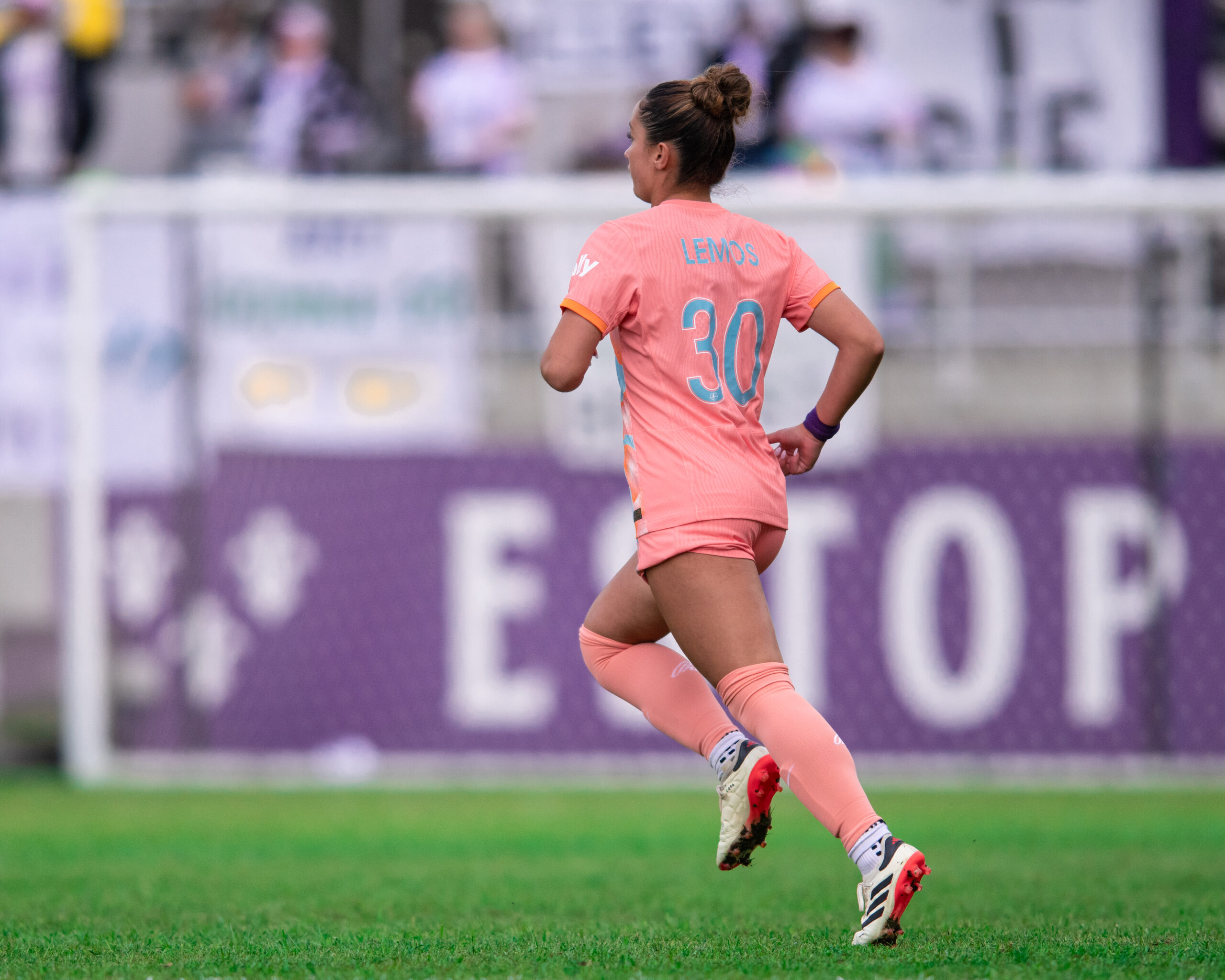
Happy Friday! I’ll be spending this weekend celebrating my birthday by beating my friends at mini golf with no mercy but still hope to catch some soccer over the next few days. I’ve also been on a bit of a movie kick and plan on catching Wes Anderson’s new flick at some point soon. But for now, let’s dive into today’s links!
Alex Freeman Called Up For Gold Cup
Orlando City defender Alex Freeman was officially called up by the United States Men’s National Team for the Concacaf Gold Cup this summer. He’s the only Lion who will be at the tournament and is one of seven uncapped USMNT players on the roster. The 20-year-old could receive more playing time than expected, as right back Sergino Dest is not on the roster so that he can recover over the summer. Left back John Tolkin was added to replace Dest, so Freeman has a real shot at making a claim for the position this month. The U.S. will take on Turkey Saturday in the first of two friendlies before its first Gold Cup match against Trinidad & Tobago on June 15.
Orlando Pride Prepares to Host the Houston Dash
With the international break for women’s soccer over, the Orlando Pride return to action Saturday with a home game against the Houston Dash. It should be a great opportunity for the Pride to ease back into the swing of things against a Dash team that’s only scored 10 goals this season. Pride midfielder Ally Lemos spoke on the benefit of being able to rest heading into this match while maintaining a winning mindset from a 3-1 victory on May 23.
Anna Moorhouse Called Up For 2025 Euros
Orlando Pride goalkeeper Anna Moorhouse was named to England’s final roster for the 2025 UEFA European Women’s Championship. She’s one of three goalkeepers on the squad following Mary Earp’s surprise retirement from international soccer, and she will likely compete with fellow uncapped player Khiara Keating for the backup position behind Hannah Hampton. Moorhouse has started in every game for the Pride this season and was an NWSL Goalkeeper of the Year finalist for her record-breaking season last year. England’s Euro run will begin July 5 against France before other group matches against the Netherlands and Wales.
Orlando City B Takes On Huntsville City FC
The Young Lions are riding high after a 2-1 win over Chattanooga FC and will take that momentum into tonight’s road match against Huntsville City FC. Midfielder Noah Levis scored his first career goal in that home win, with Justin Hylton providing the assist in his OCB debut. Orlando’s offense has been hot and cold this season but has a variety of attacking talent that can create chances in different ways. The Young Lions have only won once on the road, but a win tonight would lift them to third in the Eastern Conference.
Free Kicks
- FIFA Club World Cup action is coming to the City Beautiful this month and Orlando City legend Kaká spoke on how it’s nice for Orlando to host games.
- San Diego Wave Head Coach Jonas Eidevall was named NWSL Coach of the Month. The Wave were undefeated in May, winning three of their four matches to climb to second in the league standings.
- The NWSL will allow intraleague loans for all teams, with the players needing to consent to the move in order for it to happen. Denver and Boston’s expansion teams will have access to potentially over $1 million in Allocation Money starting on July 1 to build their rosters before the 2026 season.
- Atletico Madrid is reportedly close to signing American midfielder Johnny Cardoso from Real Betis.
- South Korea, Uzbekistan, and Jordan all qualified for the 2026 World Cup, while China was eliminated from contention. Australia beat Japan 1-0 and will qualify so long as it doesn’t lose heavily to Saudi Arabia on June 10.
- Spain beat France 5-4 in a wild game to reach the UEFA Nations League final against Portugal on Sunday. Lamine Yamal continues to take the world by storm, but a late rally by France nearly completed a comeback.
That’s all I have for you this time around. I hope you all have a fantastic Friday and rest of your weekend!
Lion Links
Lion Links: 6/5/25
MLS All-Star voting update, Kerry Abello shines with USWNT, Sergio Zapata earns recognition, and more.
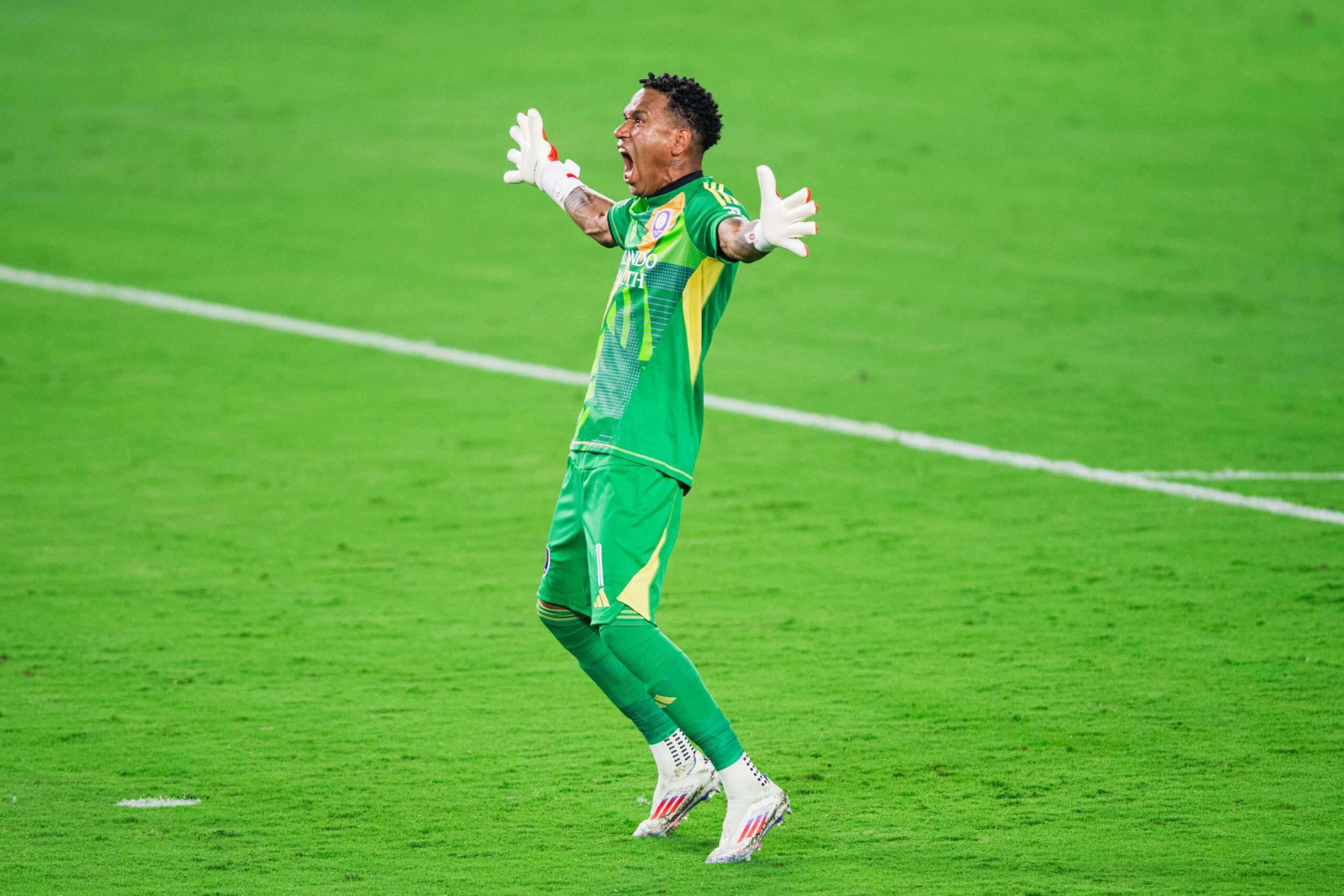
How’s it going, Mane Landers? I hope this week has been treating you well as we enjoy some international soccer and prepare for the return of NWSL action this weekend. Before we jump right into today’s links, let’s all wish a happy birthday to Orlando City B midfielder Dylan Judelson!
Pair of Lions Lead MLS All-Star Voting
Voting for this year’s MLS All-Star Game remains underway and an update was provided on which players are leading at each position. Orlando City defender Alex Freeman leads all right backs as he enjoys a breakout season. I was aware of the buzz he’s been getting this year, but it’s still surprising to see a Lion as an All-Star frontrunner. What’s even more surprising is that Pedro Gallese leads the voting for goalkeepers. The Peruvian made a rough gaffe last week, but has otherwise had a stellar season with Orlando that’s included seven clean sheets. Voting will close on June 11, so make sure to get those votes in before then.
Kerry Abello Impresses With USMNT
Orlando Pride defender Kerry Abello made her first appearance for the United States Women’s National Team Tuesday, playing every minute of the 4-0 win over Jamaica. The versatility she’s shown with the Pride translated well in Head Coach Emma Hayes’ system, as she was able to hold things down defensively and contribute to the attack as well. Abello could end up bringing solid depth to the USWNT as Hayes figures out the team’s future core of players. Enjoy this video from the USWNT that provides a look behind the scenes of Abello’s international debut.
Sergio Zapata Named Player of the Month
Sergio Zapata scored a whopping 11 goals for Orlando City’s U-19 team over the course of just four matches in May, winning the honor of MLS NEXT Player of the Month. He had three hat tricks last month, including one against Hoosier Premier at MLS NEXT Fest. Zapata committed to Cornell, so hopefully we’ll get to see him tear it up in the Ivy League over the next couple of years.
Zack Steffen Sustains Knee Injury
Goalkeeper Zack Steffen injured his knee at the United States Men’s National Team’s training camp and will reportedly miss this summer’s Concacaf Gold Cup. It’s rough news for the 30-year-old, as he was expected to compete with Matt Turner for the starting job with the USMNT. He’s been having a great season with the Colorado Rapids and returned to the club for further evaluation on the injury.
Free Kicks
- Orlando City and Orlando Health celebrated 29 elementary school students by giving them jerseys for their academic achievements.
- Sporting Kansas City forward Dejan Joveljic won MLS Goal of the Matchday for his acrobatic strike against the Houston Dynamo.
- Former Pride forward Messiah Bright signed a contract extension with the Houston Dash through the 2026 season with an option for 2027. The Pride traded Bright to Angel City FC in 2024 and she was traded to the Dash in January of this year.
- Mexico will be without San Diego FC forward Chucky Lozano for the Gold Cup due to a hamstring injury.
- Cristiano Ronaldo scored the winner for Portugal to beat Germany 2-1 to reach the UEFA Nations League final. It was Portugal’s first win over Germany in 25 years, and it will face either France or Spain in the final on Sunday.
- Simone Inzaghi left Inter Milan and is now the manager of Al-Hilal ahead of the Saudi Arabian club’s Club World Cup campaign.
That’s all I have for you this time around. I hope you all have a wonderful Thursday and rest of your week!
Lion Links
Lion Links: 6/4/25
USWNT wins as Abello gets first cap, Orlando Pride’s Concacaf W Champions Cup draw, Club World Cup in Orlando, and more.
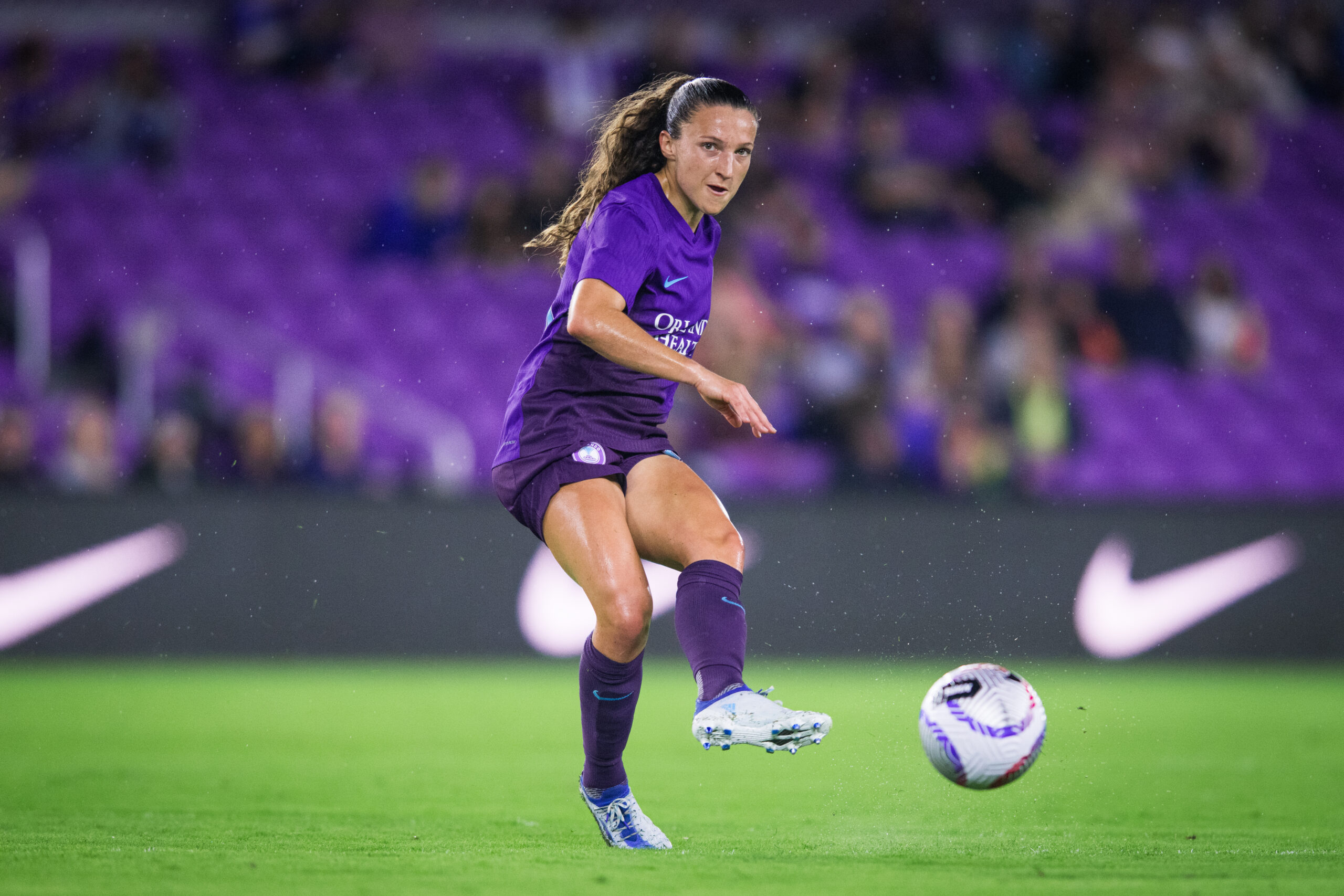
Welcome to Wednesday, Mane Landers. Tuesday was a busy soccer day, especially on the women’s side. We have plenty of Orlando Pride news, and the USWNT secured yet another victory. I’m hoping the good vibes continue since I’ll be coming down to Orlando for the Pride’s match this Saturday. If you’re going to the match, let me know, as I’d love to meet as many of our readers as possible. For now, let’s get to the links.
USWNT Blanks Jamaica
The USWNT defeated Jamaica 4-0 in a friendly at Energizer Park in St. Louis. The Orlando Pride’s Kerry Abello got her first start and her first cap in the match. She went the full 90 minutes and almost had her first international goal in the second half, but the chance went a bit wide of the right post. Ally Sentnor and Lynn Biyendolo each scored a brace as the U.S. rolled to an easy win.
Pride Internationals
Abello wasn’t the only Pride player to make an international appearance. Marta returned to international duty for Brazil getting the start and the captain’s armband in a 2-1 win over Japan. Both Grace Chanda and Barbra Banda started for Zambia in the 2-0 loss to South Africa in the Three Nations Challenge. Congratulations are also due to Zara Chavoshi, who earned her first cap with the Canadian Women’s National Team in the match against Haiti.
Concacaf W Champions Cup Draw
The Concacaf W Champions Cup draw happened yesterday and the Orlando Pride are in Group A with Club America Femenil, CF Pachuca Femenil, LD Alajuelense, and Chorrillo FC. Group B consists of NJ/NY Gotham FC, the Washington Spirit, CF Monterrey Femenil, Vancouver Rise FC Academy, and Alianza Women FC. The competition kicks off Aug. 19-21.
FIFA Loves Orlando
FIFA President Gianni Infantino sat for an interview with Jamie Seh of WKMG Orlando. Infantino spoke about the upcoming Club World Cup matches at Inter&Co Stadium and Camping World Stadium. FIFA loves Orlando enough for the city to host the Club World Cup, but not the actual World Cup. Here is the schedule for the matches in Orlando. We will be bringing you coverage of these matches.
Free Kicks
- USWNT midfielder Korbin Albert is heading to eight-time European champions OL Lyonnes on a free transfer.
- Albert will be joining Washington Spirit head coach Jonatan Giraldez who is leaving the Spirit midseason to coach OL Lyonnes.
- Chicago Fire owner Joe Mansueto has plans for a $650 million, 22,000-seat, soccer-specific stadium. It will be built in the area known as “The 78.”
- Former Lion Daryl Dike will have a new manager, as West Bromwich Albion has appointed Ryan Mason to a three-year contract. Mason comes from Tottenham Hotspur, where he was Ange Postecoglou’s assistant.
- USMNT coach Mauricio Pochettino compared Christian Pulisic to Lionel Messi, though probably not in the way you are thinking.
- The U-20 U.S. Women’s National Team defeated Costa Rica 4-0 to take first place in its third and final Group A match at the 2025 Concacaf Women’s U-20 Championship.
- The Orlando City Academy teams start play in the 2025 Patterson Cup today. The tournament runs through the the June 8.
That will do it for today. Check back as we get you ready for the return of the Orlando Pride this weekend. Vamos Orlando!
-

 Orlando Pride2 weeks ago
Orlando Pride2 weeks agoOrlando Pride vs. Utah Royals: Preview, How to Watch, TV Info, Live Stream, Lineups, Match Thread, and More
-

 Orlando City2 weeks ago
Orlando City2 weeks agoOrlando City vs. Portland Timbers: Preview, How to Watch, TV Info, Live Stream, Lineups, Match Thread, and More
-

 Orlando City2 weeks ago
Orlando City2 weeks agoOrlando City vs. Nashville SC: Five Takeaways
-
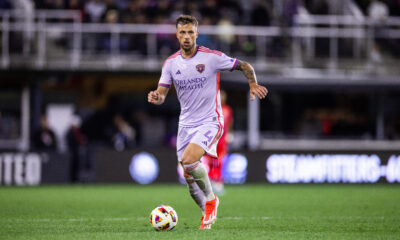
 Lion Links1 week ago
Lion Links1 week agoLion Links: 5/30/25
-
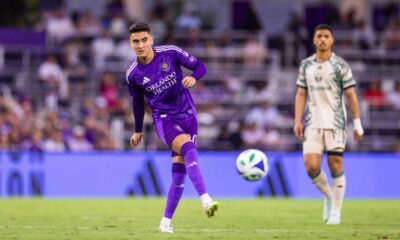
 Orlando City2 weeks ago
Orlando City2 weeks agoOrlando City vs. Portland Timbers: Final Score 1-0 as Lions Tie Club-Record 12-Game Unbeaten Streak
-
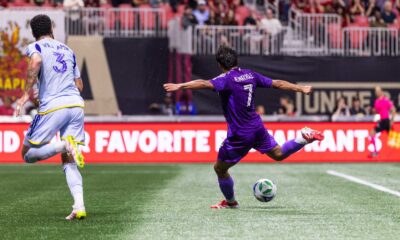
 Orlando City1 week ago
Orlando City1 week agoOrlando City vs. Atlanta United: Final Score 3-2 as Late Araujo Red Card Turns Orlando Lead into a Loss
-
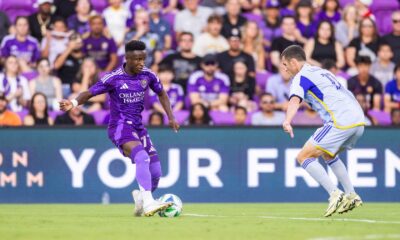
 Orlando City1 week ago
Orlando City1 week agoOrlando City vs. Atlanta United: Preview, How to Watch, TV Info, Live Stream, Lineups, Match Thread, and More
-
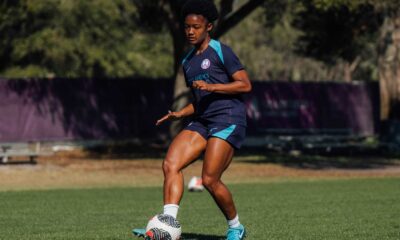
 Orlando Pride1 week ago
Orlando Pride1 week agoOrlando Pride Sign Forward Simone Jackson Through 2028




